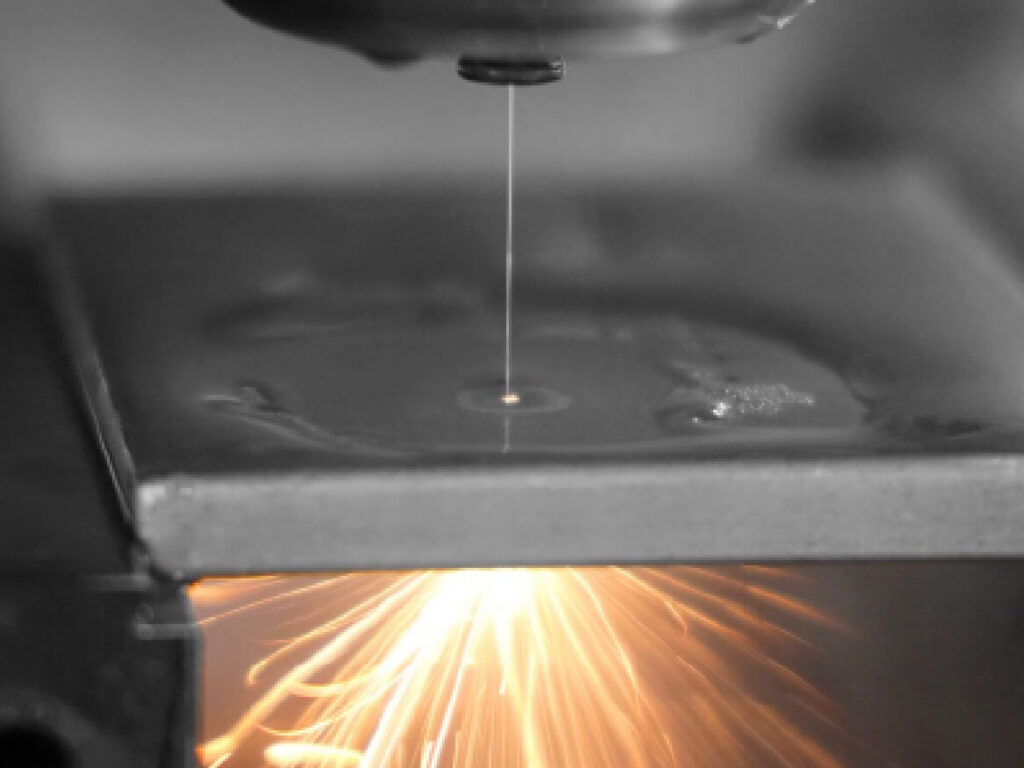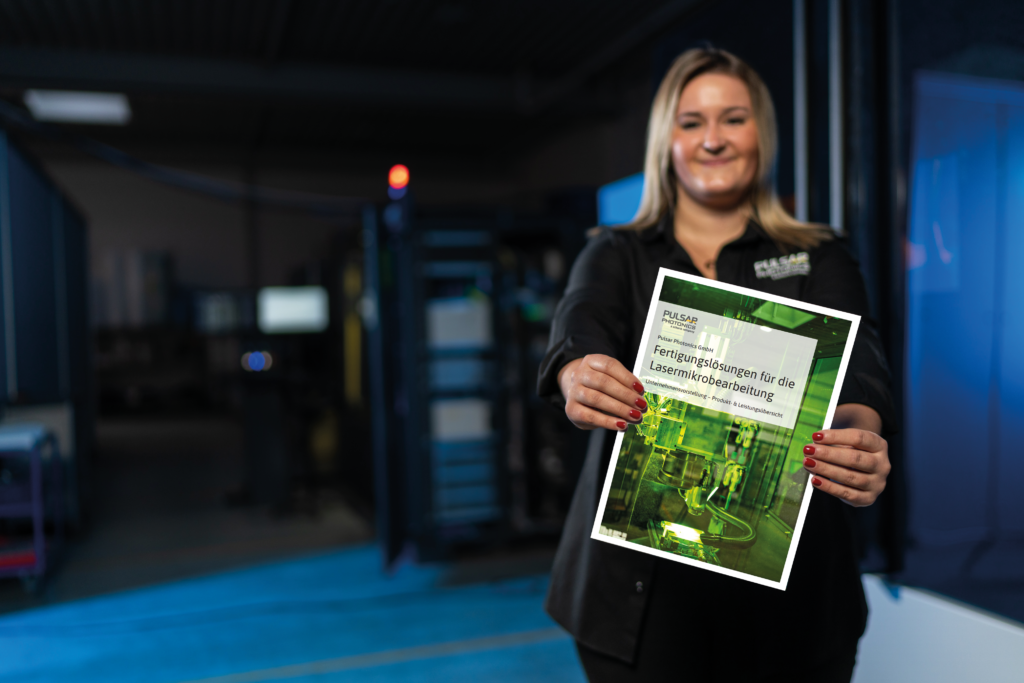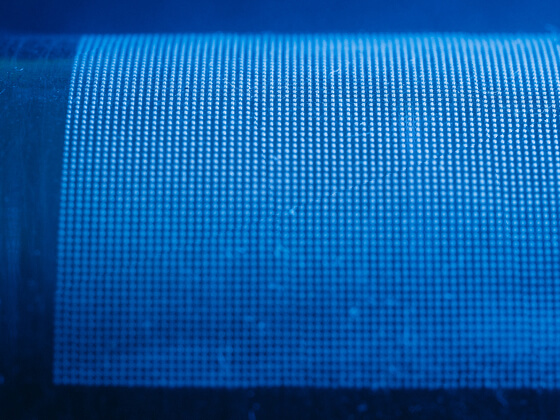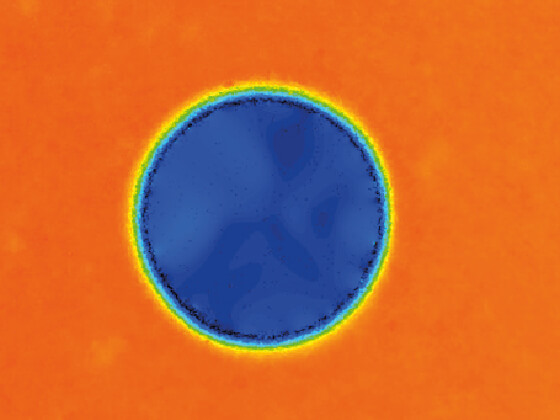Choice of different laser drilling methods
Micro holes from 2 μm in diameter
Right-angled holes with
high aspect ratio> 20: 1
The right drilling method For your needs
Microdrilling with laser radiation enables contact-free and force-free machining of all materials with high precision.
Both fine bores of a few micrometers and precision drillings up to several hundred micrometers in diameter can be introduced. Laser drilling easily meets the requirement for high reproducibility of the holes, as the tool does not wear out. Due to the melt-free ablation process, laser drilling with an ultrashort pulse laser enables post-processing-free precision drilling, which finds areas of application in a wide range of technical products.
Microdrillings can be produced by a number of different laser drilling methods: The decisive factors here are the microdrilling requirements, for example in terms of roundness or the drill wall angle, and the drilling rate to be adhered to in order to ensure cost-effectiveness for your microdrilling task. Depending on the requirements, drilling rates of up to several thousand holes per second can be achieved with high precision, low surface roughness and no burr formation.
Pulsar Photonics offers all common laser drilling processes and develops them further with new optical systems.

FAQ Laser Drilling
LASER MICRO DRILLING: OUR STATISTICS
Maximum number of holes per component
Minimum realized bore diameter
Maximum number of laser beams in the process
PERCUSSION DRILLING & TREPANING with the Ultra-Short Pulse Laser
Percussion drilling & trepanning with the laser
When percussion drilling with a laser, the laser beam is briefly positioned on a fixed point on the workpiece and a defined number of laser pulses is applied to the workpiece.
The impinging laser pulses each remove a part of the material volume, thus achieving a through-hole in the workpiece. The bore diameter achieved is typically in the size range of the focus diameter.
For production ofform bores With larger diameters, the laser beam is also moved in the drilling process. This is referred to as laser trepanning.
Achievable qualities
- Materials: Steel, aluminum, titanium, ceramics, plastics, …
- Material thickness: 5-100 µm
- Bore diameter: 2-50 µm
- Typ. Aspect ratio: up to 1:5
- Shape of the hole: Slightly conical due to the process
- Number of holes per component: Individual bores up to several million
Applications
- Ventilation holes
- Microsieves
- Electronics
Precision drilling with high aspect ratio
Precision drilling with a large aspect ratio
By using special optics for helical drilling, precise micro-holes can be made in components with material thicknesses of up to several millimetres. In combination with an ultra-short pulse laser, holes of the highest quality can be produced in almost any material.
Application examples are injection nozzles, spinnerets, vent holes and filter applications.
Achievable qualities
- Materials: Steel, aluminum, titanium, ceramics, plastics, …
- Shape of the hole: vertical bore walls
- controllable conicity: +/- 5 °
- Material thickness: up to 2 mm
- Typ. Aspect ratio: until 1:20
- Bore diameter: from 0.070 mm
- Number of holes per component: Typ. Individual holes up to several hundred
Applications
- Nozzle holes
- Spinnerets
Deep hole drilling with the water jet
Laser drilling & cutting with water jet guidance
With short pulsed laser radiation, the
Waterjet method Achieve deep hole drilling with extreme aspect ratios (structure width / material thickness). For this purpose, the laser radiation is coupled coaxially into a thin water jet in a nozzle.
The laser radiation is transmitted via this light guide
guided through the workpiece while retaining their
Focus at. By moving the workpiece relative to the water jet, precise cuts can also be achieved.
Achievable qualities
- Materials: Stainless steels, aluminum, titanium, ceramics
- Material thickness: > 5mm
- Bore diameter: > 300 µm
- Typ. Aspect ratio: up to 1:400
- Number of holes per component: Typ. Individual holes up to several hundred
Applications
- Bores in turbine blades
- Watch industry
- Jewelry industry


All you need to know about laser micro drilling
Learn more about laser micro processing
for industrial applications.
Laser drilling with diameters below 5 micrometers
Micro-bores at the limit of laser technology
In particular in measurement technology and in industrial separation, there is an increasing need for defined microbores in the single-digit micrometer range. With the Microscan technology developed by Pulsar Photonicsbore diameters down to less than 2 μm Manufacture reproducibly, even with a larger number of holes.
By using USP lasers, high-quality bores can also be produced in these size ranges.
Achievable qualities
- Materials: Metals, ceramics, thin-film systems
- Bore diameter: down to <2 μm
- Material thickness: up to 50 μm
- Tolerances of the bore diameter depending on the application:
- in the same machining step: up to < 5 % STDEV
- between components: up to < 10 % STDEV
- Number of holes: 1-10.000

Your Personal Contact person
Dr. Marius Gipperich
Technical Sales







